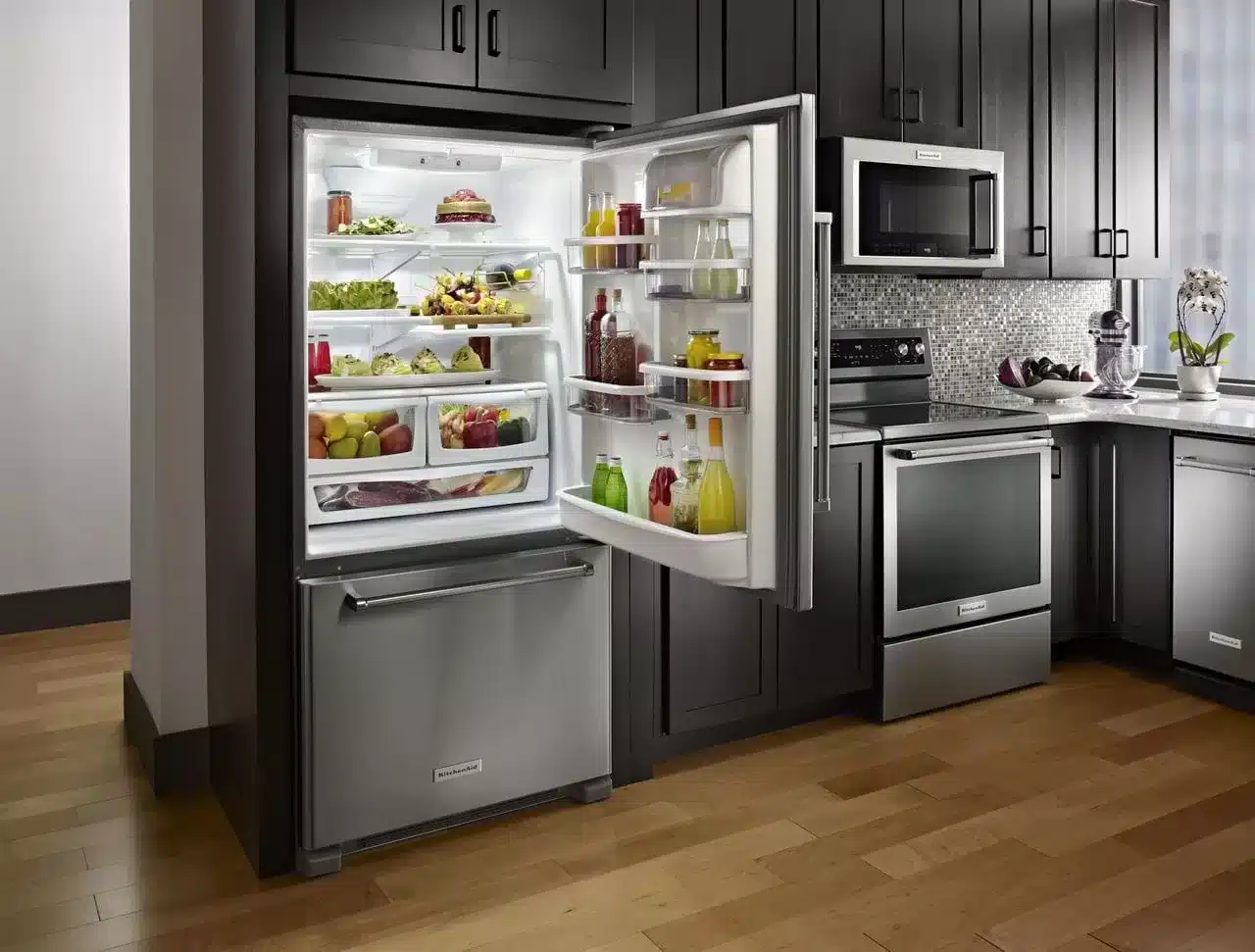If you have a Kitchenaid freezer, you may wonder what is the best temperature to set it at to keep your frozen food fresh and tasty. The temperature of your freezer can affect the quality, texture, flavor, and shelf life of your food, as well as the energy efficiency of your appliance. Setting your freezer too cold or too warm can cause problems such as freezer burn, ice crystals, spoilage, or wasted electricity. In this post, we will show you what temperature you should set your Kitchenaid freezer at and answer some common questions about freezer temperature.
The recommended temperature for your Kitchenaid freezer is 0°F (-18°C). This temperature will help preserve the quality of your frozen food and prevent the growth of harmful bacteria.
How to Set Your Kitchenaid Freezer Temperature
Setting your Kitchenaid freezer temperature is easy and quick. Depending on the model of your freezer, you may have a dial, a knob, or a digital control panel to adjust the temperature. Here are the general steps to set your Kitchenaid freezer temperature:
- Locate the temperature control inside the freezer compartment. It may be labeled as “Freezer Control” or “Temperature Control”.
- Turn the dial, knob, or button to the desired temperature setting. The factory-recommended setting is 0°F (-18°C), which will be indicated by three illuminated bars on the digital display or by a marker on the dial or knob.
- Allow the freezer to stabilize at the new temperature for 24 hours. Check the temperature with a thermometer and adjust it if needed.

How to Check Your Kitchenaid Freezer Temperature
Checking your Kitchenaid freezer temperature is important to make sure it is within the safe range and not too cold or too warm. You can check your Kitchenaid freezer temperature by using a thermometer or by looking at the digital display if your freezer has one. Here are the general steps to check your Kitchenaid freezer temperature:
- Place a thermometer in a glass of water and put it in the middle of the freezer. Leave it there for at least 8 hours or overnight.
- Read the thermometer and compare it with the recommended temperature of 0°F (-18°C). If the thermometer shows a different temperature, adjust the temperature control as described above and wait for another 24 hours before checking again.
- Alternatively, you can look at the digital display on the control panel if your freezer has one. The display will show the current temperature of the freezer in degrees Fahrenheit or Celsius. If the display shows a different temperature than 0°F (-18°C), adjust the temperature control as described above and wait for another 24 hours before checking again.

FAQs About Kitchenaid Freezer Temperature
Here are some frequently asked questions about Kitchenaid freezer temperature:
Q: Why is my Kitchenaid freezer too cold or too warm?
A: There are several possible reasons why your Kitchenaid freezer may be too cold or too warm, such as:
- The temperature control is set incorrectly or has been accidentally changed.
- The door seal or gasket is damaged or dirty, allowing cold air to escape or warm air to enter.
- The door is opened too frequently or left open for too long, affecting the internal temperature.
- The freezer is overloaded with too much food or items that block the air circulation.
- The power supply is interrupted or unstable, causing fluctuations in the compressor and fan operation.
- The ambient temperature is too high or low, affecting the cooling performance of the freezer.
Q: How do I fix my Kitchenaid freezer that is too cold or too warm?
A: To fix your Kitchenaid freezer that is too cold or too warm, you can try these solutions:
- Check and adjust the temperature control as described above and wait for 24 hours before checking again.
- Check and clean or replace the door seal or gasket if it is damaged or dirty.
- Avoid opening and closing the door too frequently or leaving it open for too long.
- Avoid overloading the freezer with too much food or items that block the air circulation.
- Check and secure the power cord and outlet for any damage or loose connections.
- Adjust the ambient temperature if possible or move the freezer to a cooler or warmer location.
Q: What are some tips to maintain my Kitchenaid freezer temperature?
A: Some tips to maintain your Kitchenaid freezer temperature are:
- Keep your freezer clean and free of spills, crumbs, and debris.
- Defrost your freezer regularly if it does not have an automatic defrosting system.
- Use airtight containers and bags to store your food in the freezer and squeeze out any excess air before sealing them.
- Label and date your food in the freezer and use them within their recommended shelf life.
- Check your freezer temperature periodically with a thermometer and adjust it if needed.
Conclusion
Setting your Kitchenaid freezer temperature to 0°F (-18°C) is the best way to keep your frozen food fresh and safe. By following the steps in this post, you can set, check, and maintain your Kitchenaid freezer temperature easily and quickly. However, if setting your Kitchenaid freezer temperature does not solve the issue, you may need to contact a professional for service.
We hope you found this post helpful and informative. If you have any questions or comments about Kitchenaid freezer temperature, feel free to leave them below. And if you enjoyed this post, please share it with your friends and family who may also own a Kitchenaid freezer.


